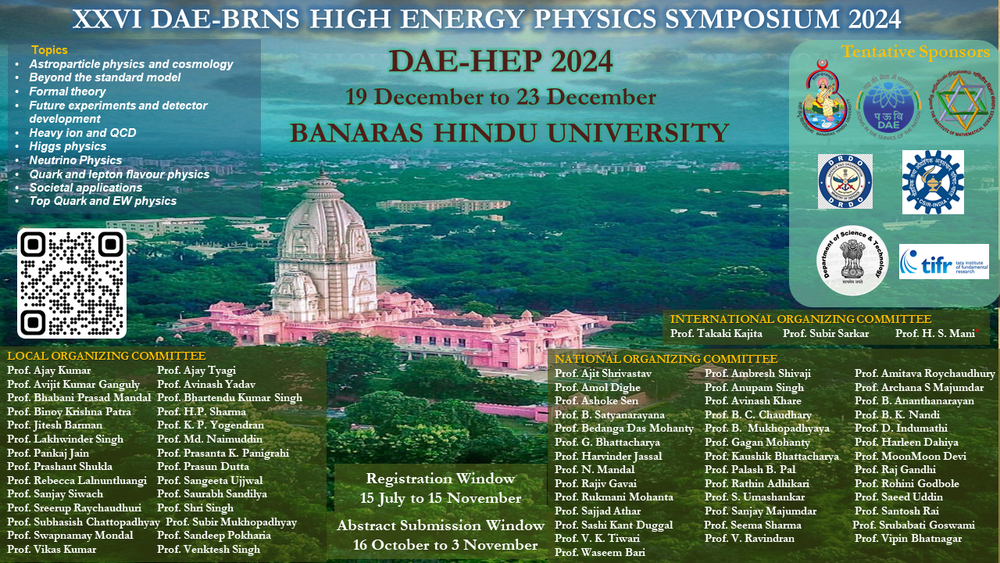Speaker
Description
High-energy cosmic muons, produced in the upper atmosphere through the decay of particles like pions and kaons, descend to the Earth’s surface. Leveraging the interaction of these high-energy muons with matter offers a powerful technique for non-invasive imaging, as they can penetrate dense materials. Depending upon the energy, muons either scatter or are absorbed when passing through objects. The characteristics of this interaction, specifically the scattering angle is influenced by the atomic number and density of the materials encountered. This scattering angle can be determined by reconstructing the muon trajectories, enabling a method similar to other radiography but with a unique sensitivity to material density and composition.
A prototype muon tomography setup is being developed with a vertical stack of position sensitive detectors that serve as precise muon trackers. This work explores the integration of various detector types, including gaseous and scintillator detectors, within a hybrid muon stack to enhance imaging capabilities. Special emphasis is given to a scintillator-SiPM strip detector prototype, considered as a potential layer in the stack. A cost-effective, multi-channel, FPGA based data acquisition (DAQ) system has been developed for this setup, featuring direct LVDS signal processing with a 500 MHz sampling frequency. It consists of a front-end electronics stage built around the NINO ASIC and back-end electronics utilizing the Altera MAX-10 FPGA board. The DAQ has been designed for high precision in timing and signal processing across multiple detector channels, enhancing the tracking accuracy for both gaseous and scintillator-SiPM detectors. The study presents progress in developing and testing this configuration, focusing on optimizing detector parameters to achieve maximum detection efficiency. Preliminary results indicate several promising design improvements that could significantly boost the performance and versatility of muon tomography systems in practical applications.
In this presentation, we will discuss our experience in optimizing detector stacks, doing efficiency studies on the detectors employed, and weighing the benefits and drawbacks of various exploration techniques.
| Field of contribution | Experiment |
|---|

